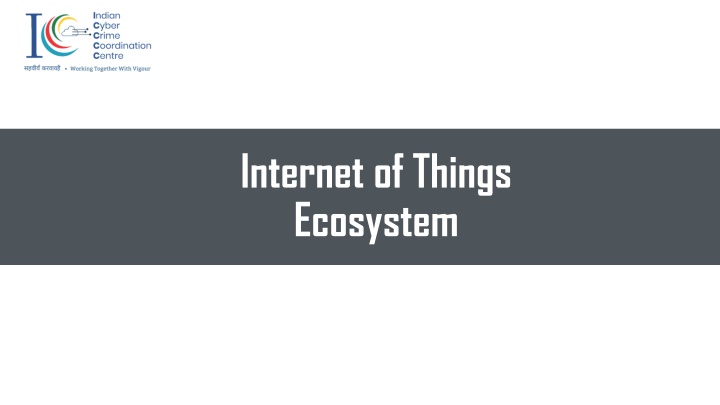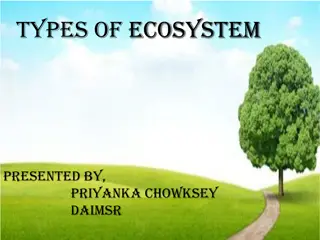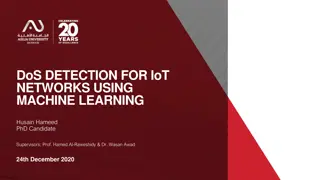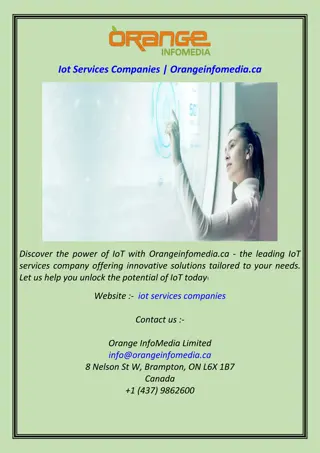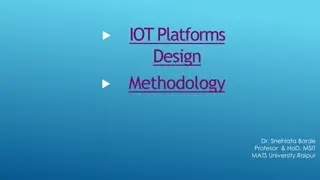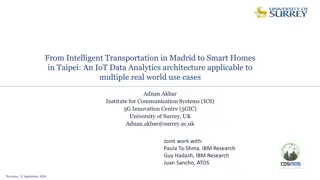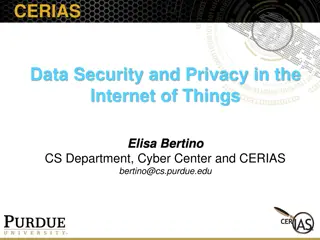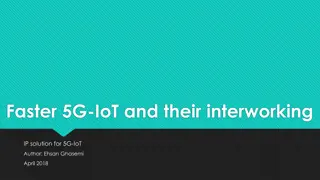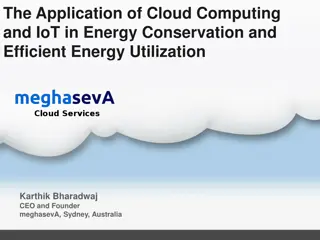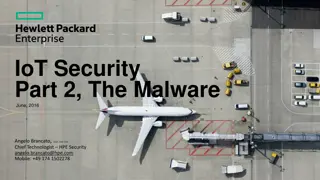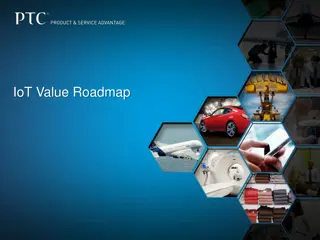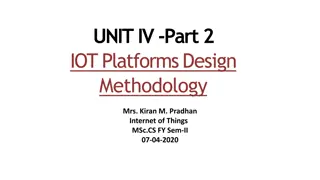IoT Ecosystem Fundamentals and Challenges
The IoT ecosystem comprises interconnected devices, connectivity, data processing, and applications working together to deliver insights and automation. It involves collecting, transmitting, processing, and acting on real-world data. Despite its benefits, challenges like security, scalability, interoperability, and energy efficiency hinder widespread adoption.
Download Presentation

Please find below an Image/Link to download the presentation.
The content on the website is provided AS IS for your information and personal use only. It may not be sold, licensed, or shared on other websites without obtaining consent from the author.If you encounter any issues during the download, it is possible that the publisher has removed the file from their server.
You are allowed to download the files provided on this website for personal or commercial use, subject to the condition that they are used lawfully. All files are the property of their respective owners.
The content on the website is provided AS IS for your information and personal use only. It may not be sold, licensed, or shared on other websites without obtaining consent from the author.
E N D
Presentation Transcript
Internet of Things Ecosystem
Introduction IoT Ecosystem Fundamentals Principles Challenges
the IoT ecosystem is a interconnected network of devices, connectivity, data processing, and applications that work together to provide valuable insights and automation. Fundamentally, IoT is about collecting, transmitting, processing, and acting on data from the real world. However, challenges like security, scalability, interoperability, and energy efficiency remain significant hurdles to widespread IoT adoption and implementation.
Fundamentals of IoT Ecosystem
Fundamentals of IoT Ecosystem a. Devices and Sensors Devices include physical objects (e.g., smart appliances, wearables, vehicles) equipped with sensors or actuators. Sensors collect data from the environment (e.g., temperature, motion, humidity). Actuators execute actions based on data (e.g., turning on a fan or locking a door). b. Connectivity Devices connect to the internet or a local network using various communication protocols: Wi-Fi, Bluetooth, Zigbee, LoRaWAN, NB-IoT for wireless communication. Ethernet for wired communication. Communication enables data exchange between devices, gateways, and servers. 5
Fundamentals of IoT Ecosystem c. Data Processing Collected data is processed locally (edge computing) or remotely (cloud computing). Processing involves analyzing raw data to extract actionable insights. d. Cloud Infrastructure Cloud platforms store, analyze, and manage data. They provide scalability, data storage, analytics, and machine learning capabilities. e. User Interface (UI) Applications (mobile, web, or desktop) provide a Ul for users to monitor and control devices. Examples: Smart home apps, industrial monitoring dashboards. 6
Key Components of IoT : Devices Devices (Things): Physical objects embedded with sensors, actuators, and communication interfaces (e.g., smart thermostats, wearables, industrial machines). Sensors: Heart rate monitor (PPG or ECG) SpO2 (blood oxygen sensor) Accelerometer Gyroscope Barometer Sensors: Temperature: 1 C accuracy to maintain precise control. Humidity: Typically 5% RH accuracy. Motion/Occupancy: Infrared or ultrasonic to detect room presence. Air Quality: (Optional) Measures CO2, VOCs, or particulate matter.
Key Components of IoT : Connectivity Connectivity: Communication protocols (Wi-Fi, Bluetooth, Zigbee, 5G, etc.) that enable data transmission between devices and central systems.
Key Components of IoT : Data Processing Data Processing & Analytics: Cloud computing or edge computing platforms where data is processed and analysed.
IoT Software & Apps 1. Google Home: Manages Google Nest devices (thermostats, cameras, and smart speakers). 2. Apple HomeKit: Integrates and controls smart home devices from one platform. 3. Fitbit App: Tracks health and fitness data from Fitbit wearables. 4. Ring App: Allows users to control smart security cameras and doorbells. 10
I IoT Sensors
Image Sensor Image sensors are instruments which are used to convert optical images into electronic signals for displaying or storing files electronically 13
Temperature Sensor A device used to measure temperature in various systems, whether for industrial processes, environmental monitoring, or consumer electronics. 14
Level Sensor It is used to determine the level or amount of fluids, liquids that flow in an open or closed system 15
IR Sensor It is used to either emitting or detecting infrared radiation 16
Smoke Sensor It is used detect airborne particles or gases. 17
Chemical Sensor A device that detects the presence, concentration, or quantity of a chemical substance in a liquid, gas, or solid sample. 18
Water Quality Sensor A water quality sensor is a device used to measure various characteristics of water to determine its quality and suitability for various uses. These sensors are widely used in environmental monitoring, water treatment facilities, aquaculture, and agricultural irrigation systems. 19
Pressure Sensor A pressure sensor is a device used to measure the pressure of gases or liquids. These sensors are essential in various industries to monitor and control systems where pressure is a critical parameter 20
Chemical Sensor A device that detects the presence, concentration, or quantity of a chemical substance in a liquid, gas, or solid sample. 21
Motion Detection Sensor It is adevices that detect physical movement within a defined area. These sensors are widely used in security systems, automation, and other applications where detecting the presence or movement of people, animals, or objects is crucial. 22
I Learning - Government Initiative
Internet of Things - Security Security: Ensuring data privacy and protecting against cyber threats. Interoperability: Making devices from different manufacturers work together. Scalability: Handling growing numbers of connected devices. Energy Efficiency: Prolonging battery life for IoT devices. Latency: Reducing delays in data transmission and processing 27
"Anything that can be connected, will be connected"
